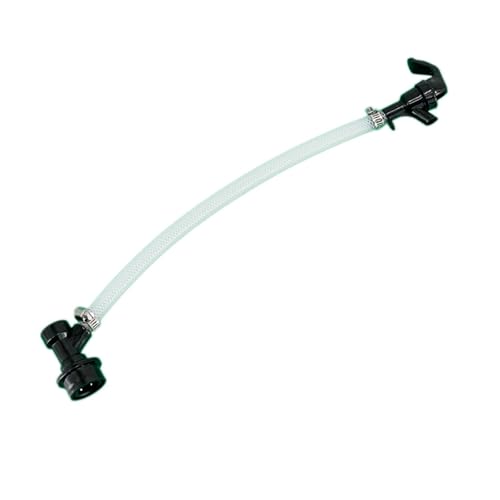youngson616
Well-Known Member
- Joined
- Mar 16, 2022
- Messages
- 138
- Reaction score
- 43
Adjust heat up - that wasn't explained well. I meant warm up the area where the bottles are finishing by a few degrees to get yeast moving faster to make co2

Domino Dots will work. BUT You must have the box with 198 "dots" per pound.Can I just use dominoe sugar cubes and put 1 in each bottle?
Awesome! It would definitely be worth a shot. Ill look out for those at the storeDomino Dots will work. BUT You must have the box with 198 "dots" per pound.
The number is listed on the box.








![Craft A Brew - Safale S-04 Dry Yeast - Fermentis - English Ale Dry Yeast - For English and American Ales and Hard Apple Ciders - Ingredients for Home Brewing - Beer Making Supplies - [1 Pack]](https://m.media-amazon.com/images/I/41fVGNh6JfL._SL500_.jpg)



Nope they are in my closetAlso, (and this may go without saying) make sure you don't bottle and then putting your bottles in the fridge as it will put the yeast into hibernation! My friend did this, and was bewildered as to why he had no carbonation.
I have the bottles in my closet at room temp, about 69 degrees. I also fermented at that temp. I wonder if I should heat up that area a few degreesAlso, I keep my newly bottled ales at 73 - 74°F for 2 weeks. Then I'll move it to ambient storage temps or the fridge. The one time I kept my beer at 69°F after bottling, I had poor results with carbonation. Though I know from others that they don't have an issue at 69°F or less.
I put the sugar water mixture in the bottling bucket of course.That might make one ask what your ABV is. If that's high too, then maybe your yeast are too worn out and at their limit for alcohol tolerance. And that might suggest you need to add some yeast that do very well in high ABV beer.
Before you dump it, maybe try adding 1/2 of a fizz drop to a few bottles, recap them and give them a week or so to see if they carb up. If they do you can do the rest.I wasted two batches over beer not carbing, and now will dump another because priming sugar method just not working for me. Guess im stuck on fizz drops
There are differing opinions on this but the theory is that with the acid and longer boil you invert the sugar (think Belgian candi) so it is more easily fermented by the yeast.I will try that! Do I have to boil prime sugar 15 minutes and why that long??
Thanks!
At 10 days, you're still a little early. Keep them warm, wait 2-3 weeks, then chill them a couple days, then try.
To discuss head retention is kinda another topic and we'd have to start with what recipe and process was used.
Whoops.....Let the water sugar mix cool to near the beer temp. Plus/Minus a few degrees won't hurt, but don't dump super hot sugar water into the beer.
Whoops.....
I poured the hot sugar mixture into the bottling bucket right off the stove. Siphoned beer onto it right away. I followed the other instructions exactly.
5 gal * 128oz/gal / 12oz/bottle = ~ 53 bottles in (3 to 5)*60s or 180-300sec means about 3-5sec per bottle
I'd have granular sugar all over the danged place if I tried that.
Can I just use dominoe sugar cubes and put 1 in each bottle?
1/2tsp of white 'table' sugar and a funnelThe only ones I can find are too big to fit down the neck of normal 12oz or 33cl bottles.
Opened one today a lot better! I think some more days in bottling will help
Try one on day 21.
Patience, grasshopper.
Yessir! A good rule of thumb is to keep your bottles at the fermentation temperature printed on the yeast pack.I have the bottles in my closet at room temp, about 69 degrees. I also fermented at that temp. I wonder if I should heat up that area a few degrees...
Lottta folks swear by the smaller domino dots but you have to get the smaller ones.I really didn’t think it necessary to start a new thread, so…. I’ve used NB’s carbonation drops but have found 1/4 to a 1/3 of them to be too big for a standard 12 oz beer bottle. I end up using a sanitized screw driver to push them in the rest of the way. I like using these for “regular beers” for uniform carbonation. I still mix corn sugar in for Belgians so I can up the carbonation. Can anyone recommend a brand that easily fits a standard 12oz beer bottle w/out getting stuck in the neck?
Brewers best carbonation drops fit in the bottle necks way better than northern fizz drops, and cheaper. I get them from my local brew shop, sure you could find them online somewhere.I really didn’t think it necessary to start a new thread, so…. I’ve used NB’s carbonation drops but have found 1/4 to a 1/3 of them to be too big for a standard 12 oz beer bottle. I end up using a sanitized screw driver to push them in the rest of the way. I like using these for “regular beers” for uniform carbonation. I still mix corn sugar in for Belgians so I can up the carbonation. Can anyone recommend a brand that easily fits a standard 12oz beer bottle w/out getting stuck in the neck?